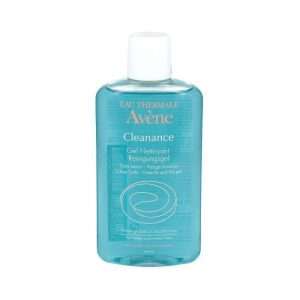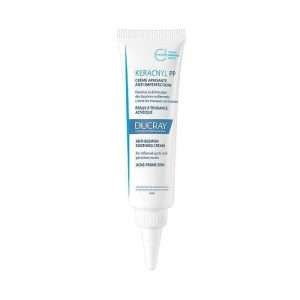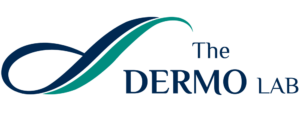
If you have comedones, there’s no need to stress. Comedonal acne is the mildest form of acne, with cystic acne falling at the other end of the spectrum. In other words, as long as you approach your breakouts the right way, you should be able to get them cleared up, but that may be easier said than done. Acne is not a one-size-fits-all phenomenon, and not all treatments work for all types of acne.
Are you still following? To help you break down this specific type of breakout, we reached out to the dermatologist and cosmetologist Dr. Dina El Kattan to give us her expert advice on identifying this type of acne so you can treat it properly.
Here’s how to tell if your bumps are actually comedones. Read on!
What are comedones and how are they formed?
Comedones are hair follicles on the skin that are clogged with dirt, excess oil, and dead skin cells. According to Dr. Dina El Kattan, comedones appear as small, flesh-colored acne papules and are usually found on the forehead and chin.
Comedones are considered mild acne, which is a non-inflammatory type of acne. All inflamed pimples start with a comedo. If left untreated or infected with bacteria, it can turn into painful red bumps.
What are the types of comedones?
- Open comedones
Open comedones, commonly known as blackheads, appear when the sebum plug is located near the opening of a pore. The dark color is not due to dirt but rather to a chemical reaction in melanin, the pigment responsible for skin color. When exposed to oxygen, the melanin in dead skin cells oxidizes and turns dark, resulting in a blackhead, explains Dr. Dina El Kattan. This is why blackheads have a dark appearance.
- Closed comedones
Closed comedones, commonly called whiteheads, appear when the sebum plug develops well below the opening (pore) of the hair follicle. They are not painful and cannot be “popped” because they do not contain pus. Dr. Dina El Kattan indicates that whiteheads have closed surfaces and they look like small white or flesh-colored dots.
Dr. Dina El Kattan states that blackheads and whiteheads are the most common forms of comedonal acne. She adds that some comedones can be invisible to the eye (microcomedones). On the other hand, it’s also possible to have larger than normal blackheads and whiteheads.
What causes comedonal acne?
- Oily skin
Oily skin is the result of overactive sebaceous glands in the dermal layer of the skin.
- Hormonal imbalance
Hormonal imbalances can trigger comedonal acne. You may sometimes notice acne when you are close to your period.
- Heredity
Comedonal acne can be hereditary. If your parents had comedonal acne, there is a good chance you will have it too.
- Poor skin care
Inadequate cleansing and lack of moisturizing can cause dead skin cells to build up and clog pores.
- Comedogenic skin care products
Some skin care products can make comedonal acne worse. Comedonal acne can be avoided by using non-greasy and non-comedogenic products.
- Skin treatments
Skin treatments such as laser therapy or chemical peels can cause comedonal acne.
- Diet
Foods high in sugar and fat tend to cause breakouts in the form of comedonal acne.
- Stress
Stress can also cause hormone spikes. While it can be difficult to manage the stress in your body, exercising is recommended to increase endorphins (hormones that relieve stress and pain) and promote deep sleep.
How to treat comedonal acne?
The good news is that there are many effective options to get rid of both closed and open comedones. Most of them not only help to soften and eliminate existing comedones but also prevent changes in the pilosebaceous unit that can lead to new comedones.
Daily skin care:
Comedonal breakouts can be treated or minimized by adjusting the way you care for your skin. Here are some simple tips you should adopt in your daily routine:
1- Cleanse your face thoroughly twice a day.
As per Dr. Dina El Kattan, the first step to an effective clear skin care routine is to choose the right cleanser. Go for a cleanser that removes oil and dead skin cells and keeps pores open. She recommends using your cleanser twice a day, so debris never has a chance to build up on your face.
Cleanse your face in the morning to remove what the skin has expelled to the surface overnight, and cleanse at night to remove what the skin has been exposed to during the day.
Now for the not-so-good news: don’t over-cleanse. Avoid washing your face more than twice a day, as more frequent cleansing of acne-prone skin can irritate and leave the skin dry and inflamed. Inflamed skin is more vulnerable to infection, which increases the risk of acne breakouts.
Keep your skin clean with these award-winning cleansers that won’t irritate your skin.
Ducray Keracnyl Foaming Gel
A-Derma Phys-AC Foaming Gel
Eau Thermale Avène Cleanance Cleansing Gel
2- Follow with a topical acne treatment
In addition to cleansing, applying your topical acne treatment is another essential way to protect and smooth your skin and heal acne marks. It gently removes impurities and regulates the production of oily secretions. If you have comedones, a regular wash plus an acne treatment could be all you need to stay ahead of the acne game.
Below are the best acne treatments for comedonal acne.
Ducray Keracnyl PP Anti-Blemish Soothing Cream
A-Derma Phys-AC Global

Eau Thermale Avène Cleanance Comedomed
3- Use non-comedogenic skin products.
These are oil-free moisturizers, cleansers, and cosmetics designed to prevent clogged pores. They are labeled non-comedogenic.
4- Keep your makeup brushes and applicators clean.
Oil and dead skin cells can build up on the bristles and pads. You can usually remove them with warm soapy water. Rinse thoroughly and leave to air dry.
5- Remove your makeup before going to bed.
Sleeping with makeup residue contributes to clogged pores. Use a fragrance-free, alcohol-free makeup remover to avoid irritation.
Note: If you have a blackhead or whitehead, do not squeeze it. You may damage your skin and cause a blemish. Trying to pop them is a comedon’t!
Prescription medication:
Dr. Dina El Kattan suggests applying topical treatments directly to the face to control excess oil and unclog existing comedones. Common options include:
- Azelaic acid
- Benzoyl-peroxide
- Glycolic acid
- Salicylic acid
- Retinoids
- Sulfur
Systematic treatment can also be used in the form of antibiotics such as isotretinoin.
Note that these treatments must be performed with close follow-up with a dermatologist.
A brief note from The Dermo Lab
While comedonal acne is not as noticeable or bothersome as other types of acne, it can still be a concern. This is completely understandable, which is why it’s best to keep it under control while it’s still relatively mild.
Ultimately, you’ll want to treat your acne appropriately; overtreatment can be just as bad for your skin as undertreatment.
If left untreated, comedonal acne can turn into a more severe breakout and become more difficult to handle. Treatments can take some time to work, so be patient and talk to your doctor or dermatologist if you have any questions or concerns.














